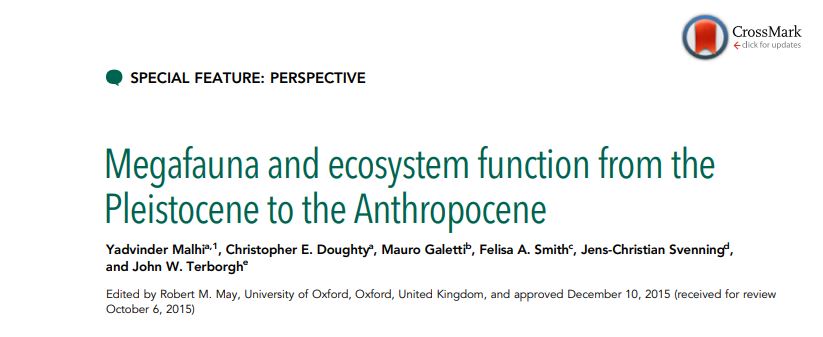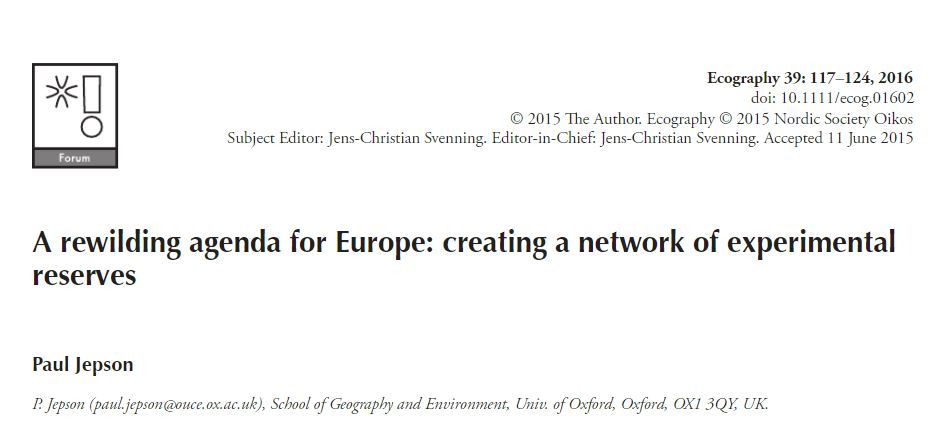
1/ Are you interested in how to carry out a reintroduction based #rewilding project? Then this paper (& thread) is for you. Zamboni et al introduce the reintroductions of giant anteater, collared peccaries, tapirs and more to The Iberá Rewilding Program IRP (Argentina) 

2/ The Iberá rewilding project is part of the 13,000km2 Iberá Reserve; made up of public & private land. It has marshes, lagoons, small rivers, temporarily flooded grasslands, savannas, and forests. The Conservation Land Trust bought 1500km2 of private land in 1999 to restore. 

3/ The project uses this definition of #rewilding “species reintroduction to restore ecosystem functioning” from science.sciencemag.org/content/345/61…
4/ Planning: 1) list the species missing, 2) participatory workshop with local experts to identify species to be reintroduced, 3) design and write recovery plans for each species: giant anteater, pampas deer, collared peccary, tapir, green-winged macaw, & jaguar,
5/ 4) assess knowledge and attitudes of local people toward giant anteater and jaguar. 5) work with experts to identify potential release areas and conduct qualitative habitat suitability assessment. For jaguars a formal quantitative habitat suitability assessment was done.
6/ 6) Population viability Assessment for anteaters under different reintroduction and management scenarios to help select the best management options. 7) Seek approval for release (which took between 6 months and 2 years), permission was mostly given to release captive animals
7/ The animals reintroduced were either rescued animals or from zoos. Pampas deer were translocated from wild populations. All animals had to be quarantined and then under went a soft release. 



8/ Monitoring was an integral part of the project, all released animals were fitted with VHF transmitters. Monitoring post-release mortality and reproduction helped modelling of population trajectories.
9/ As of 2017 (when paper was published) 7 reintroductions of 5 species (giant anteater, pampas deer, peccary, tapir and green-winged macaw) had taken place. Two populations (giant anteater and pampas deer) are considered self-sustaining. Others continue to be supplemented. 

10/ Lessons learnt from the project: 1) Communication: it was difficult to convince stakeholders to support & give permission. The public was generally ambivalent or negative initially. Successful development of the project (ecologically and from tourism) has been well received.
11/ 2) Bureaucratic challenges: Finding animals for reintroduction and obtaining permits for their transport and release was very time consuming. Expert involvement and support and clear recovery plans were important.
12/ 3) Funding: Initially the Conservation Land Trust supported the project. But the budget increased and external funding was required. Initial success in the anteater and pampas deer reintroductions gained credibility and with it support.
13/ 4) Species-specific challenges: No projects to model off so had to start with basics: “What do we know & what do we need to know? What should our general working approach be? How should we organize ourselves for each project? What are the potential areas of conflict?”
14/ Reintroduction order: started with the giant anteater which wasn’t seen as controversial. Followed by pampas deer which was the most urgent. No mention of jaguars was made until the reputation of the project was established.
15/ Monitoring helped improve reintroduction strategies. Don’t release animals in/near winter. Releasing anteaters in pairs helped anchor them to the release site. Releasing peccaries in small cohesive groups reduced aggressive behaviour & increased protection against predators.
16/ Get advice from experts with practical experience. There can be conflict with some conservationists and academics when challenging the status quo, in this case proactive management was met with scepticism.
17/ Really interesting account of a #rewilding project focused on animal reintroductions. Full paper can be found here: reader.elsevier.com/reader/sd/pii/… @RewildingArg
• • •
Missing some Tweet in this thread? You can try to
force a refresh








